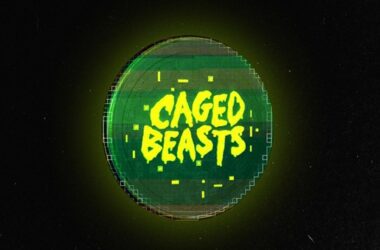Last Updated on March 6, 2024
Bitcoin is the original cryptocurrency and has gained incredible mass adoption thanks to this pioneering status. It has become the most decentralized and secure payment network globally. That said, many consider the Bitcoin network as a first-generation technology with limited use cases. This is partially true, as users on the network mainly use BTC as a store of value and for transferring value.
Bitcoin lacks the flexibility of Ethereum-like smart contracts, tokenization, and decentralized applications. However, we’ve seen the emergence of new use cases of the Bitcoin blockchain in the past few months.
Lately, Ordinals and NFTs on the Bitcoin network have become hot topics in the crypto community. But how do these assets work? Can you keep such NFTs in your Bitcoin wallet? This article will try to demystify Bitcoin Ordinals, their technology, and use cases. Let’s start with the basics.
What Is Bitcoin NFT?
A Bitcoin NFT is a non-fungible token on the Bitcoin network that uses the new Ordinals protocol. This means that like NFTs on Ethereum, these assets can possess various characteristics and hold additional data. This includes images, game data, videos, etc., which can be tokenized on the Bitcoin blockchain.
However, unlike those on Ethereum or Solana blockchains, Bitcoin NFTs do not use smart contracts. Bitcoin’s limited technology has pushed developers to explore uncharted waters in how the Bitcoin protocol works.
How Does the Ordinals Protocol Work?
Instead of smart contracts, Bitcoin NFTs utilize the Ordinals protocol. Every NFT receives a serial number that the Ordinals protocol inscribes into a Satoshi, the smallest unit of value in the network.
The SegWit upgrade in 2017 and the Taproot upgrade in 2021 made this function possible. Segwit added the possibility of a witness signature, whereas Taproot standardized more complex transactions.
The Ordinals protocol became active in January 2023, incredibly successful overnight. Even during the bear market, users inscribed more than 200,000 NFTs in just over a month after release.
BRC-20 vs.ORC-20
BRC-20 and ORC-20 are two different Bitcoin-based token protocols that have emerged since the release of Ordinals.
BRC-20 is an experimental token standard on the Bitcoin network. It allows users to create fungible tokens similar to the ERC-20 tokens on Ethereum. This means that developers can mint additional fungible assets on Bitcoin.
ORC-20 are digital artifacts that add to the BRC-20 features. Instead of just being able to tokenize fungible assets, they can carry various types of data on the Bitcoin network. More importantly, ORC-20 tokens are easier to index, are upgradable, and have flexible naming spaces.
The combination of these features allows users to mint specific NFTs as ORC-20 tokens.
Where to Use Bitcoin NFT?
Bitcoin NFTs are a bit different than smart contract-based NFTs on EVM networks. They can’t be seamlessly plugged into decentralized applications or NFT marketplaces. However, with the development of layer 2 solutions on Bitcoin, they will gain similar use cases to their counterparts.
In Digital Art and Music
NFTs have a huge impact on the art industry. They allow artists to easily provide ownership of unique artworks and market them in a much more democratic way. In regards to music, they can represent single tracks, albums, and even collections of an artist. This allows artists to market their music directly to consumers, without having to resort to expensive third-party distributors.
In Gaming
Gaming NFTs provide full ownership of in-game assets to the players. This allows them to monetize their hobby and earn real money by playing games. They can then sell these NFTs on open marketplaces.
In addition, they provide access to the play-to-earn industry, where finances are tightly knit with gaming assets.
In Virtual Real Estate
Virtual real estate NFTs in metaverses were an extremely hot asset class during the last bull market. These NFTs offer ownership of digital pieces of real estate in games or metaverses. In most cases, users can deploy different monetization mechanisms on these digital parcels.
For Identity
NFTs are an incredible asset that allow users to identify themselves in the Web3 space. They are impossible to duplicate or counterfeit, making them more secure than most traditional identification methods.
In Real-World Property
Bitcoin NFTs provide an opportunity for tokenizing real-world real estate. This would allow users to exchange deeds directly on the blockchain and avoid brokerage fees.
Popular Bitcoin NFT Projects
Although still in an early stage, Bitcoin Ordinals have seen a huge interest from the crypto community. Currently, two projects stand out from the crowd, mainly due to the popular teams that created them.
Ordinal Punks
Ordinal Punks are an homage collection to the original Punks on Ethereum. They follow a similar design to the first Punk collection, using the punk-is-not-dead algorithm for their generation.
This collection comes at a very limited 100 pieces, which users were able to mint within the first 650 inscriptions on the Bitcoin network. This has played in favor of these NFTs’ value, as their floor price is currently hovering around 3 BTC.
TwelveFold
Yuga Labs is famous for multiple projects in the NFT space, like the Bored Ape Yacht Club and the Otherside metaverse. In February 2023, they introduced the TwelveFold collection, a limited series of 300 artwork NFTs.
The collection is a base-12 system that combines different colors and shapes to generate unique pieces of digital art. Each NFT is represented on a 12 x 12 grid, inspired by time, maths, and uniqueness. Their floor price is currently bottoming at 1 BTC.
The Future of Bitcoin NFT
Bitcoin Ordinals have brought a breath of fresh air to a seemingly stale blockchain. They provide additional utility to the network and attract new developers to it. More importantly, Ordinals require high amounts of blockspace, increasing the fees on the network. This is a boon for miners as Bitcoin block rewards are coming to their next halving in April 2024.
****
Stay up to date:
Subscribe to our newsletter using this link – we won’t spam!



